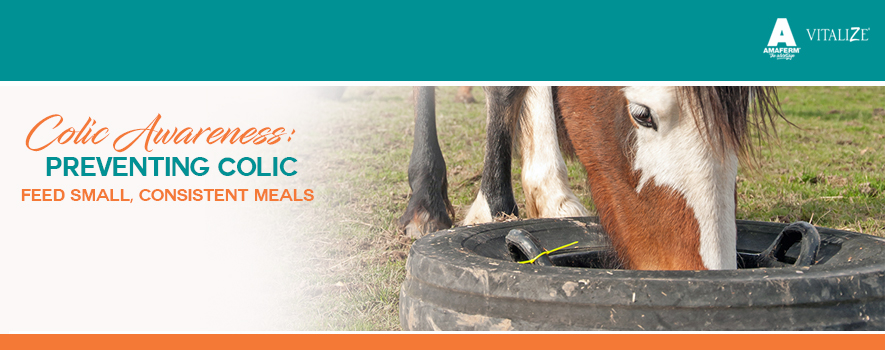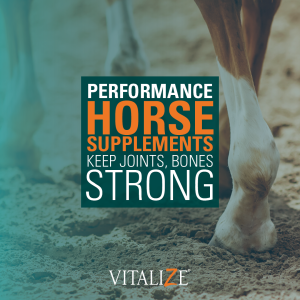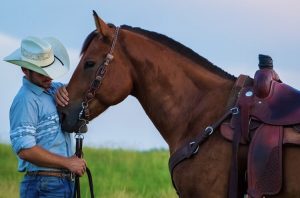
Last time, we discussed the importance of forage in your horse’s diet. Today’s colic tip is perhaps one of the most important practices: consistency.
Feed small, consistent meals.
Because many horses are used for performance or breeding purposes, they generally need more energy than what hay can supply, which is why we as trainers, owners, and riders often add concentrates, or grains, into our horse’s diet.
A key preventative for colic is to break feeding grains into 2 or 3 smaller meals in a day. Horses were not designed to consume massive amounts of simple carbohydrates, or starches, but instead to eat forage over a long period of time, picking-and-choosing their bites, then digesting it slowly. If horses consume a large amount of grain, the starches may move too quickly through the small intestine and into the cecum & large intestine without being properly digested. There, microbes in the hindgut will begin to ferment this undigested starch, producing lactic acid and resulting in the multiplication of bad bacteria.
Another consistency we must monitor is quality and type of forage fed. Often, we think of forage as the “golden ticket”… because it usually is! But, it has been shown that changes in forage quality or type are also detrimental to the horse’s health if not done gradually and carefully. For example, if your horse is moving across the country, it is important to research the new regional types of forage, and if different from yours, find one that is most similar. It would also be wise to send a few bales along with your horse to make a seamless transition. Additionally, monitor hay for mold, debris, or weeds, as these can be damaging and lead to colic.
Tune in next week for another colic prevention tip to keep your horse at its best!

